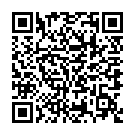|
|
|
| Module code: ABBW68 |
|
30VH (30 hours) |
|
5 |
| Semester: 2 |
| Mandatory course: yes |
Language of instruction:
English |
Assessment:
Online exam (minimum of 75% to pass)
[updated 30.10.2024]
|
|
The total student study time for this course is 150 hours.
|
Recommended prerequisites (modules):
None.
|
Recommended as prerequisite for:
|
Module coordinator:
Studienleitung |
Lecturer: Studienleitung
[updated 14.12.2021]
|
Learning outcomes:
Flight Performance II
After successfully completing this module, students will be able to calculate and handle available mass.
They will understand the common basics of mass and balance, and will be able to fill out their load & trim sheets.
Flight Planning II
Students will be able to plan long-range flights.
They will be able to plan their route, prepare their operational flight plan, and calculate their fuel requirements.
Navigation II
Students will be able to navigate on a given course via the different ground stations and navigation aids on track.
They will also practice and understand the Inertial Navigation System, which will allow for navigation without any ground stations.
[updated 30.10.2024]
|
Module content:
Flight Performance II
Airplane performance
The purpose of mass and balance considerations
Mass
Center of gravity
Aircraft data
Determination of CG position
Load & trim sheet
Moving the CG
Cargo handling
Flight Planning II
Long range flight planning
Navigation II
Inertial navigation systems
Ground Direction Finder (DF)
ADF
CVOR & DVOR
2.1. Distance measuring equipment (DME)
Instrument Landing System (ILS)
Microwave Landing System (MLS)
Pulse techniques and associated terms
Ground radar
Airborne weather radar
Secondary Surveillance Radar (SSR) and transponder
Use of radar observations and their application in in-flight navigation
Long range navigation
Typical flight deck equipment and operation
Instrument indication
Types of area navigation systems input
VOR/DME area navigation
Flight director and autopilot coupling
Doppler
Loran C
Decca Navigation System
Global satellite systems ( GNSS )
[updated 30.10.2024]
|
Teaching methods/Media:
Laptops, Presentations
[updated 30.10.2024]
|
Recommended or required reading:
Training documents from the flight school
[updated 30.10.2024]
|

